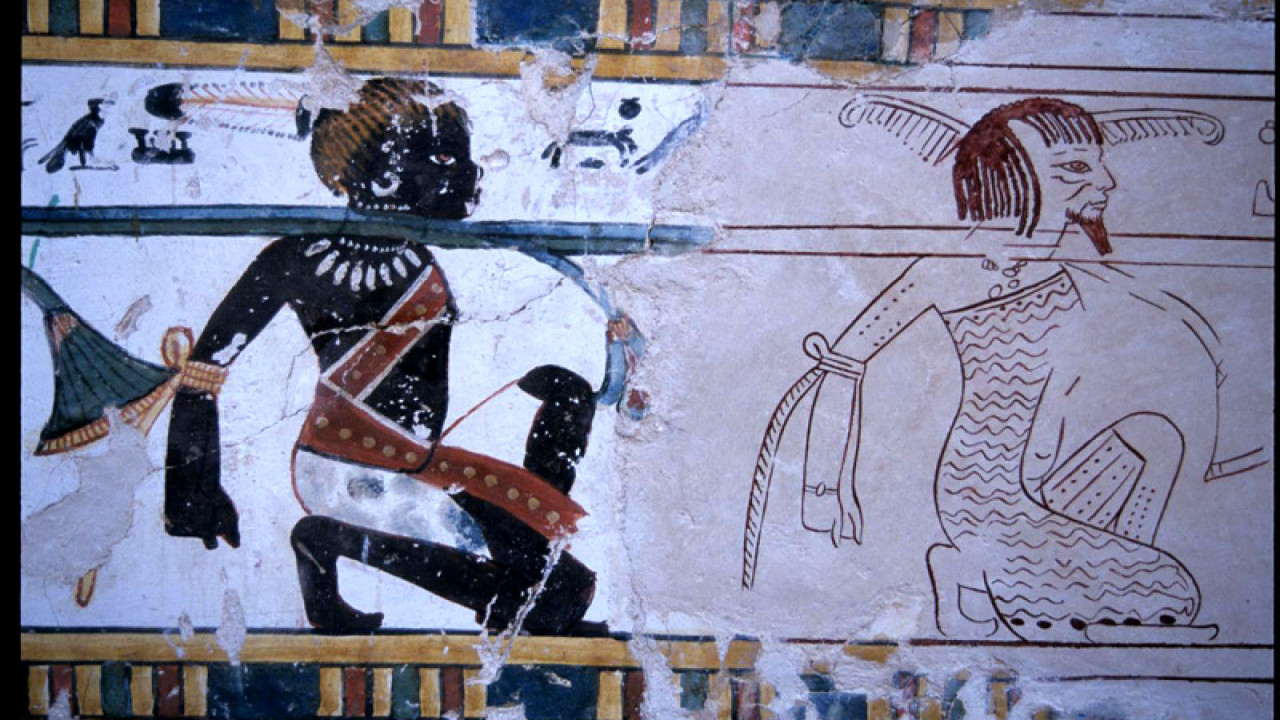
When we look at ancient Egyptian monuments, color is to be found everywhere. Documenting either tombs, temples or the smallest painted graffito, we must provide a reasonable solution for recording the painted remains of the surface.
Krisztián Vértes
Read more
To appreciate some of the attributes digitalEPIGRAPHY represents at its core, we would like to introduce a one of a kind epigraphic project focusing on the facsimile representation of the wall paintings in TT 65.
Krisztián Vértes
Read more
A Spanish archaeological mission coordinated by the Spanish National Research Council has been working at the hill of Dra Abu el-Naga North since January 2002. The mission, also known as the ‘Djehuty Project’, has recently turned its attention towards its epigraphic process's digital overhaul.
Méndez-Rodríguez and Ruiz Sánchez de León
Read more
The digital epigraphic record in Djehuty’s chapel comprises five phases: photographic documentation, in situ preliminary drawing, initial inking, collation, and final inking. This procedure ensures that the record is faithful and, in addition, that it reflects the artistic spirit that was embedded in the original work.
Méndez-Rodríguez and Ruiz Sánchez de León
Read more
A Japanese expedition from the Institute of Egyptology at Waseda University, Tokyo has been working in the el-Khokha area in the Theban Necropolis since 2007 under the direction of Prof. Jiro Kondo. The team has rediscovered the tomb of Userhat (TT 47), Overseer of the King’s Private Apartment under Amenhotep III
Précis and commentary by Júlia Schmied
Read more
The conservation and documentation of the tomb chapel of Menna (TT 69) at Luxor was implemented between 2007 and 2009, under the direction of Melinda Hartwig of Georgia State University.
Précis and commentary by Júlia Schmied
Read more
Das Grab des Paenkhemenu (TT 68) und die Anlage TT 227 by Karl-Joachim Seyfried is part of a series of publications devoted to the Theban tombs of Ramesside officials produced by the Egyptological Institute of the Heidelberg University.
Précis and commentary by Júlia Schmied
Read more
A recent exhibition in the Antikenmuseum Basel recreates two of the most beautiful rooms, the Hall of Beauties and the adjacent Pillared Room in Seti I’s magnificent tomb in the Valley of the Kings.
Précis and commentary by Júlia Schmied
Read more
In recent years, the Heidelberg University’s Ramesside Tomb Project has been studying the motifs behind the decoration of the forecourts of two Ramesside tombs, TT 157 and TT 183.
Précis and commentary by Júlia Schmied
Read more
The conservation and documentation of the tomb of Senneferi (TT 99) at Luxor was carried out between 1992 and 2002 by the Cambridge Theban Tomb Project, under the leadership of Nigel Strudwick.
Précis and commentary by Júlia Schmied
Read more
In 1995, the Royal Ontario Museum initiated its Theban Tomb Project with Lyla Pinch-Brock and ROM Assistant Curator Roberta Shaw as co-directors recreating the facsimile technique used by Nina de Garis Davis.
Précis and commentary by Júlia Schmied
Read more
Nina and Norman de Garis Davies were two of the most influential artists/epigraphers devoted to recording Egyptian wall paintings in the first half of the Twentieth century.
Précis and commentary by Júlia Schmied
Read more
We’d like to showcase a project that used laser technology to remove dirt and soot from the fragile wall paintings of an ancient Egyptian tomb – a technology that may become a tremendous aid in the future of epigraphy.
Précis and commentary by Júlia Schmied
Read more
The 18th Dynasty tomb of Menna is one of the most beautiful painted tombs in the Theban necropolis of the Nobles in Luxor. The tomb has been cut into the upper ridges of Sheikh Abd Al-Qurna and includes a forecourt and a tomb chapel in the form of an inverted ‘T’.../Users/euergetes/Desktop/Screen Shot 2020-07-21 at 10.27.54 AM.png
Created by Archimedes Digital and Mohamed Abdelaziz
Read more
The tomb of Queen Nefertari, the wife of Ramses II, is among the most beautiful monuments one can visit on the west bank of Luxor, Egypt. The tomb (QV66) is located in the main wadi of the Valley of the Queens...
Created by Andrey Plaksin (Scionik)
Read more
Since 2015, the Book of the Dead in 3D project has produced eighteen 3D models of previously unpublished ancient Egyptian coffins, which are kept in the storage rooms of the Phoebe A. Hearst Museum of Anthropology at UC Berkeley and in other Egyptological collections in California and in the US. These 3D models are currently available on the project’s website and on its Sketchfab page.
Rita Lucarelli
Read more